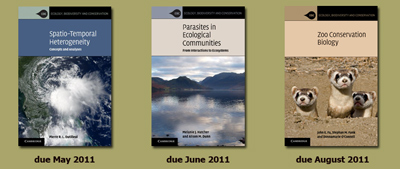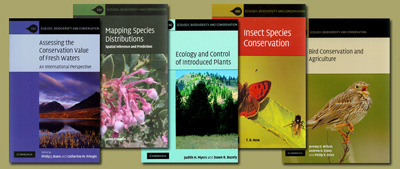Martin Kelsey reviews the best-selling Field Guide to the Birds of Colombia, and its companion volume, the Checklist of the Birds of Colombia – both of which are distributed by NHBS.
“This book will be indispensable for anyone interested in Colombia and will be an essential companion in the field.”
“When I first visited Colombia, A Guide to the Birds of Colombia (Hilty & Brown 1986; reviewed in Ibis 130: 136) had just been published. Not being able to afford a hardback edition, but worried about how its 800+ pages would survive as a paperback in the field, I followed local advice and got it hard-bound in Bogotá. Thereafter I carried my 1.45 kg treasure, wrapped in a plastic bag, in a special shoulder bag along forest trails. It was invaluable. The new guide, however, fully deserves its epithet ‘Field’. A full kilogram lighter than Hilty and Brown and less than 250 pages long, this remarkable book will fit in a pocket. Unlike the former, it illustrates in colour all of the species (nearly 1900) recorded in Colombia. This it achieves in 225 plates, which despite also fitting in distribution maps and brief notes for each species, appear far less crowded than in Hilty and Brown, especially for groups such as hummingbirds (Trochilidae), antbirds (Thamnophilidae) and tyrant flycatchers (Tyrannidae). There are coloured maps showing relief, political boundaries, vegetation types, rainfall, Endemic Bird Areas and Protected Areas, as well as lists of endemics, ‘near-endemics’, threatened species and species lists for Colombia’s offshore islands in the Caribbean and Pacific. Unlike Hilty and Brown, there is no separate text section. To meet this book’s rigorous requirements for economy, species notes are restricted to the few words that can be fitted onto the plates, highlighting information to help identification: habitat, status, diagnostic behaviour, perhaps one or two plumage features to separate from confusion species and, for some groups only, voice. It is a practical compromise which works extremely well to meet the stated objective of the book: to be easy and quick to use in the field, with the emphasis on identification. Its compact design is based on an extensive consultation with birders. There will, of course, be times when you need to refer back to the more extensive and comprehensive coverage of Hilty and Brown, but I recall that even with that work, which was my starting point in those days, I still needed to consult additional literature and museum skins from time to time. This book will be indispensable for anyone interested in Colombia and will be an essential companion in the field. There is also another important reason why I warmly recommend it. It is published by the pioneering Colombian NGO ProAves and all profits from sales will go towards their work in bird conservation and education. In just over 10 years since its formation, this group of energetic young fieldworkers and conservationists have made many exciting discoveries, helped to establish two national parks and currently own and manage a network of 18 bird reserves, as well as implementing integrated conservation and rural development projects and promoting bird tourism. The authors intend to publish a Spanish edition soon, which should have great appeal to both students and the general public in Colombia. As the country becomes safer to travel in, there is a growing interest in getting to know its extraordinary biodiversity through visits to reserves and national parks offering access and good infrastructure. ”

 Checklist of the Birds of Colombia
Checklist of the Birds of Colombia
“The bilingual Checklist to the Birds of Colombia serves as a companion volume to the Field Guide. It is the most up-to-date list for Colombia, which has more bird species recorded than for any other country. Subspecies are given (with an indication of where they are found) and endemic species are highlighted in bold. A further column indicates whether the species carries a threatened status and in which ProAves bird reserves it is known to occur (no fewer than 1130 species have been recorded in these 18 reserves, a remarkable 12% of the world’s total!). There are eight blank columns for personal use. The inside back cover carries a coloured map showing the location of these reserves, as well as national parks and other protected areas. Much as I still treasure my copy of Hilty and Brown, I wish that these publications had been around as well during my early travels in Colombia, to complement the former and save on considerable wear and tear! I will certainly be using this new field guide and the checklist on my next trip and I unreservedly recommend others to do the same.”

Martin Kelsey,
IBIS The International Journal of Avian Science
Browse our full trade catalogue
 Field Guide to the Birds of Macaronesia: Azores, Madeira, Canary Islands, Cape Verde
Field Guide to the Birds of Macaronesia: Azores, Madeira, Canary Islands, Cape Verde Helm Field Guide to the Birds of Trinidad and Tobago, 2nd Edition
Helm Field Guide to the Birds of Trinidad and Tobago, 2nd Edition











